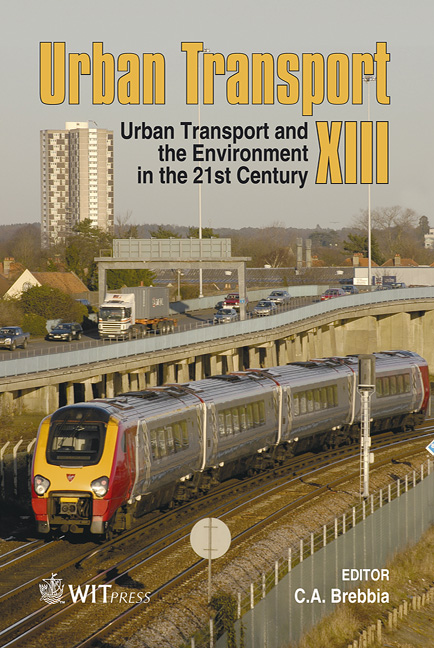A Model For Traffic Behaviour Evaluation Based On A Discrete Event Simulation Approach
Price
Free (open access)
Transaction
Volume
96
Pages
9
Published
2007
Size
2,057 kb
Paper DOI
10.2495/UT070171
Copyright
WIT Press
Author(s)
A. Di Febbraro & N. Sacco
Abstract
There are various reasons why both freight and passenger transport demands keep growing significantly not only in Europe, but also worldwide. In this framework, the interaction between such demands in urban areas assumes a relevant role in the overall performances of an urban transportation system. In this paper, the special case of a seaport located in an urban area is considered, since such a situation often occurs in cities grown along the coast around an \“old” port. Then, to cope with the problem of simply modelling the freight and passenger flows in urban areas, in this paper a coloured Petri net modelling approach is proposed. Keywords: urban traffic networks, coloured Petri nets, freight and passenger transportation demand. 1 Introduction It is well-known that, for different reasons, freight transport keeps growing significantly not only in Europe, but also worldwide. Unfortunately, all the same the share taken by road transport is enlarging, resulting in increasing congestion, environmental harm, and any other kind of costs. In this framework, the interaction between the freight and the passenger transport demand in urban areas assumes a relevant role in the overall performances of an urban transportation system. In this paper, the special case of a seaport located in an urban area is considered. Such a situation, often occurring in cities grown along the coast around an \“old” port, is very difficult to cope with from a transportation point of view. In fact, the overall management of the interactions among the different transport modes can become a formidable task. With the aim of evaluating such interactions, it is worth underlining that intermodal freight terminals are typically complex large systems managing
Keywords
urban traffic networks, coloured Petri nets, freight and passenger transportation demand.





